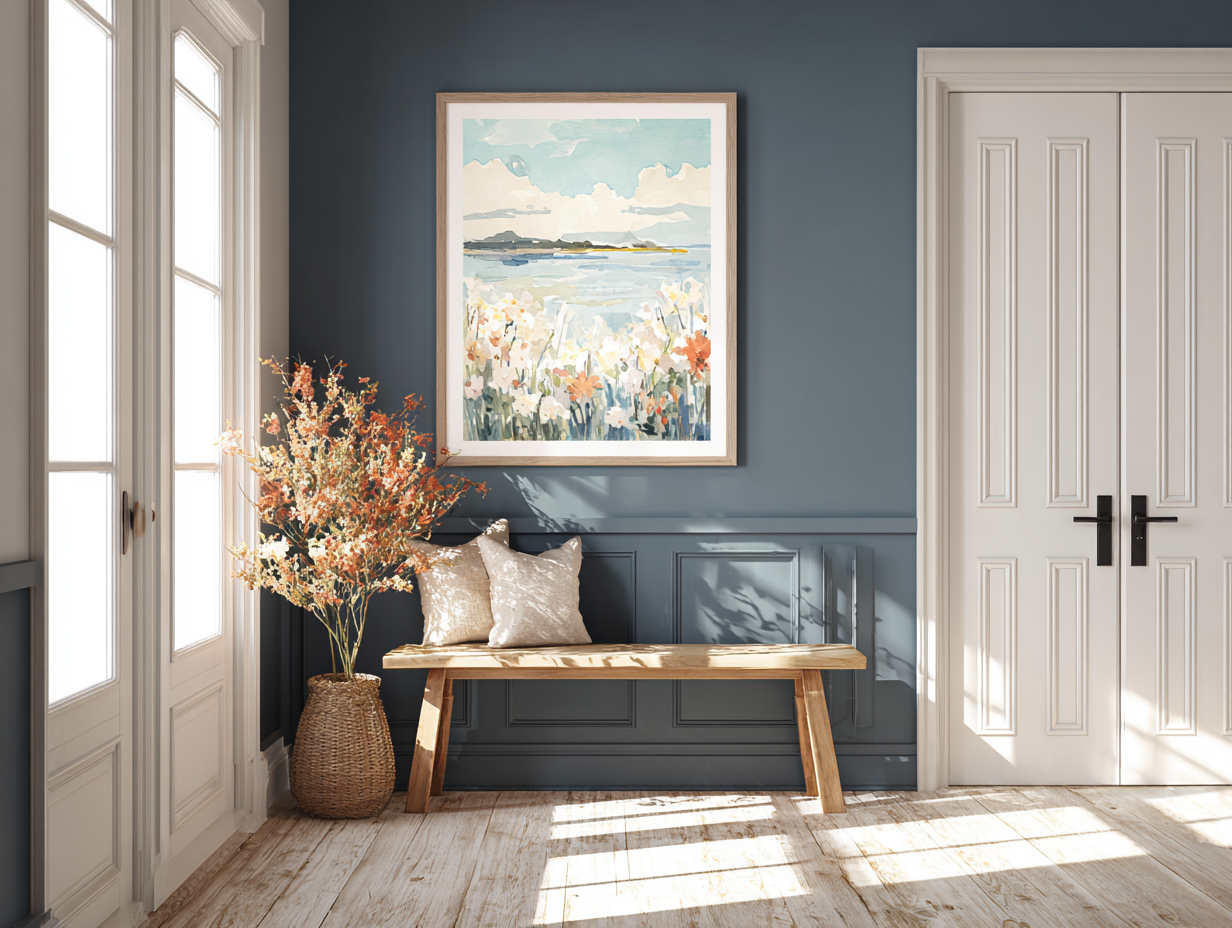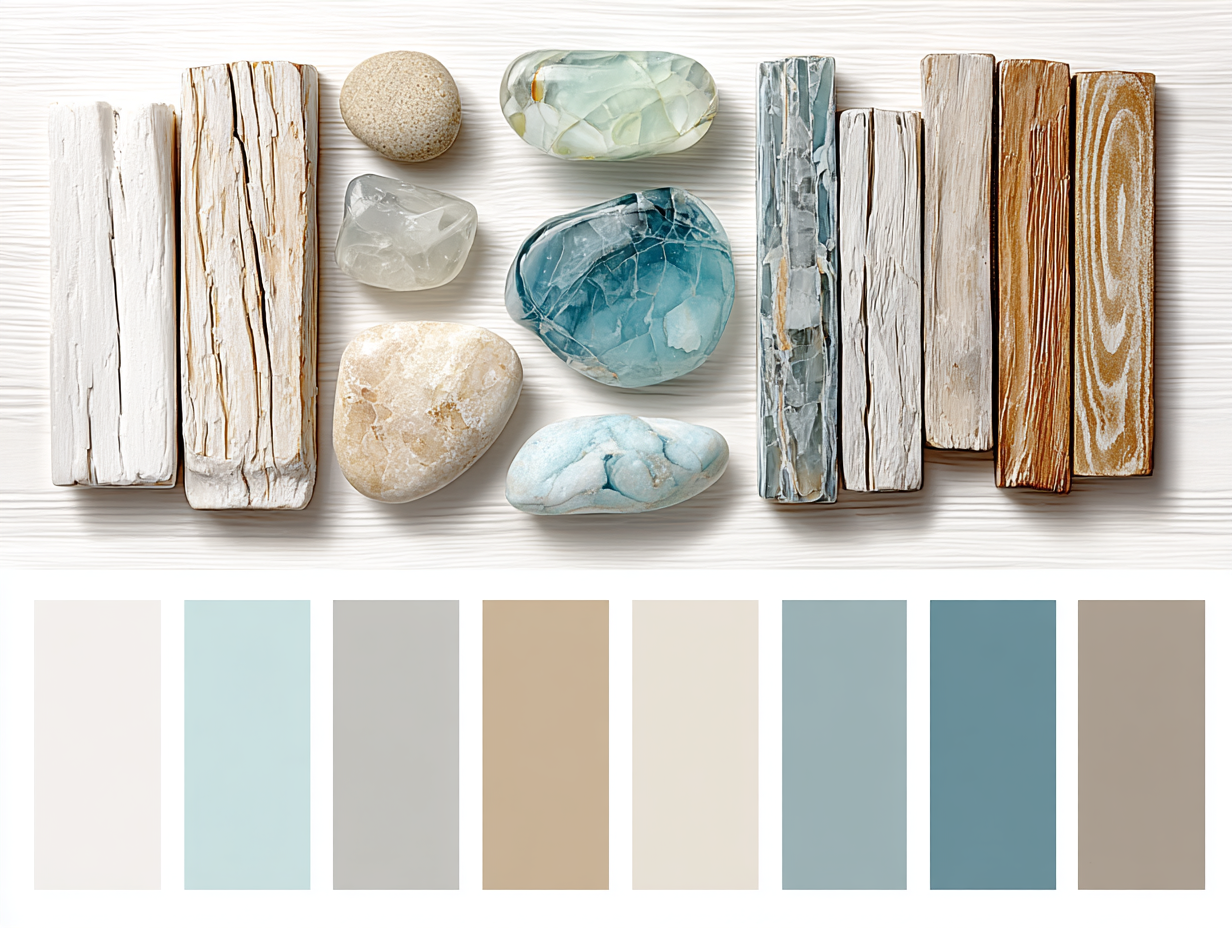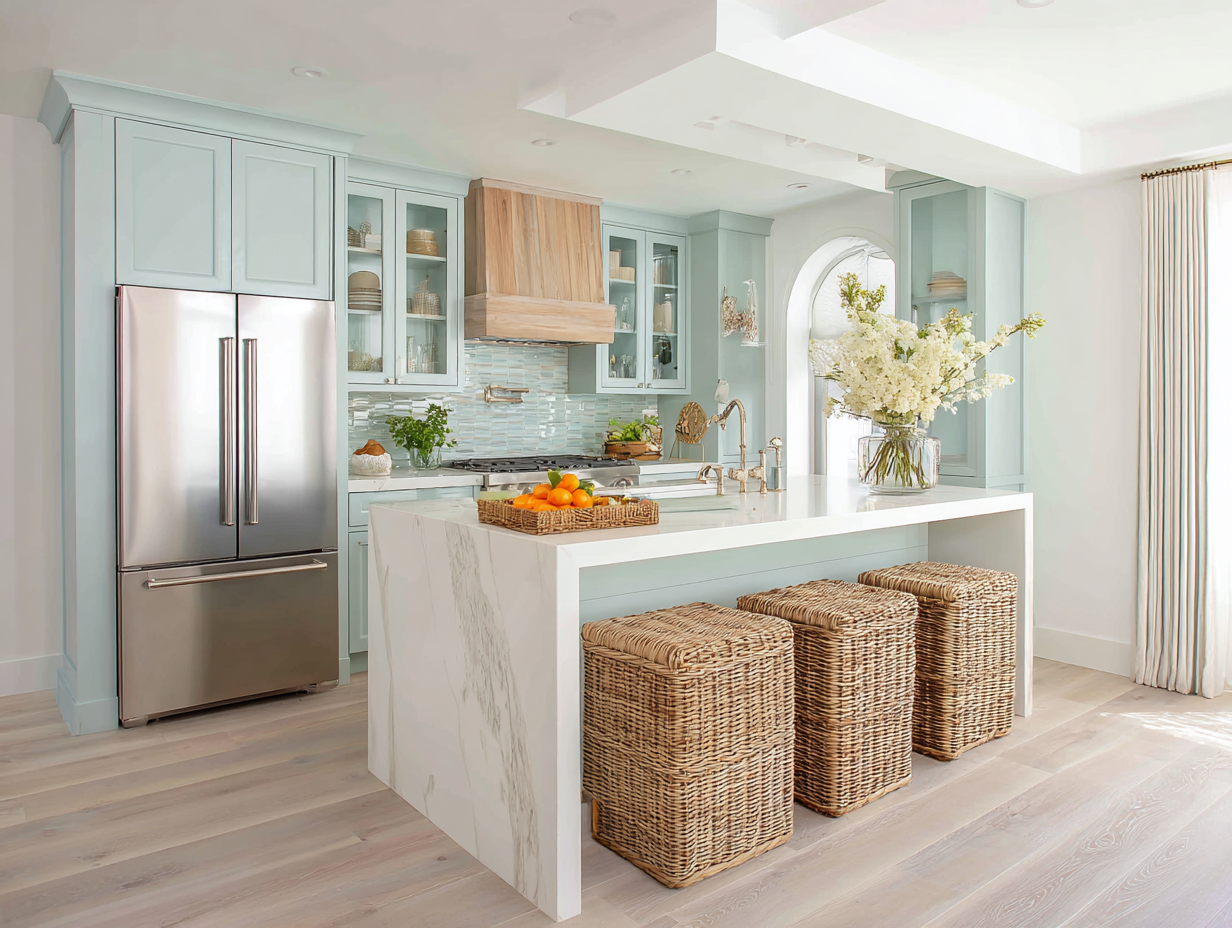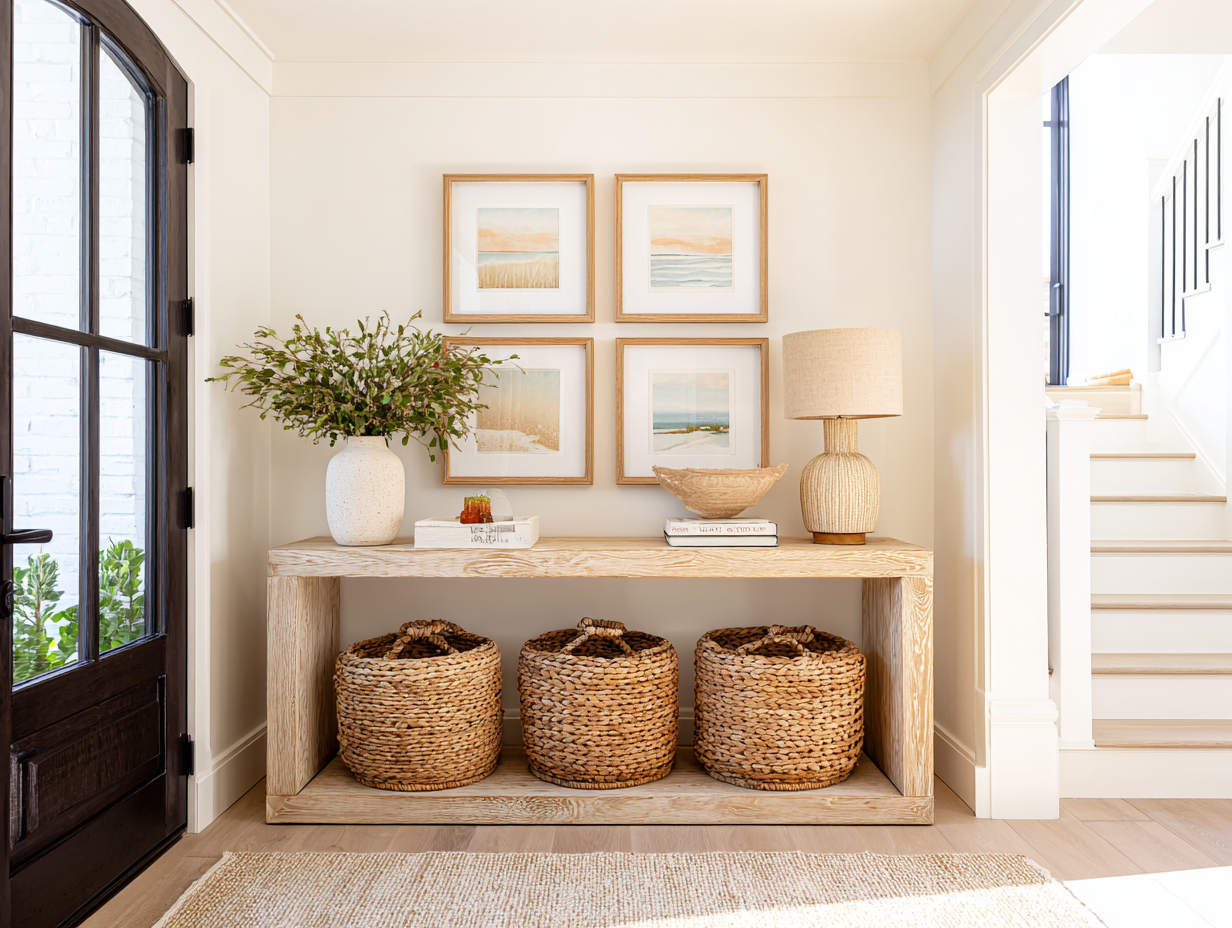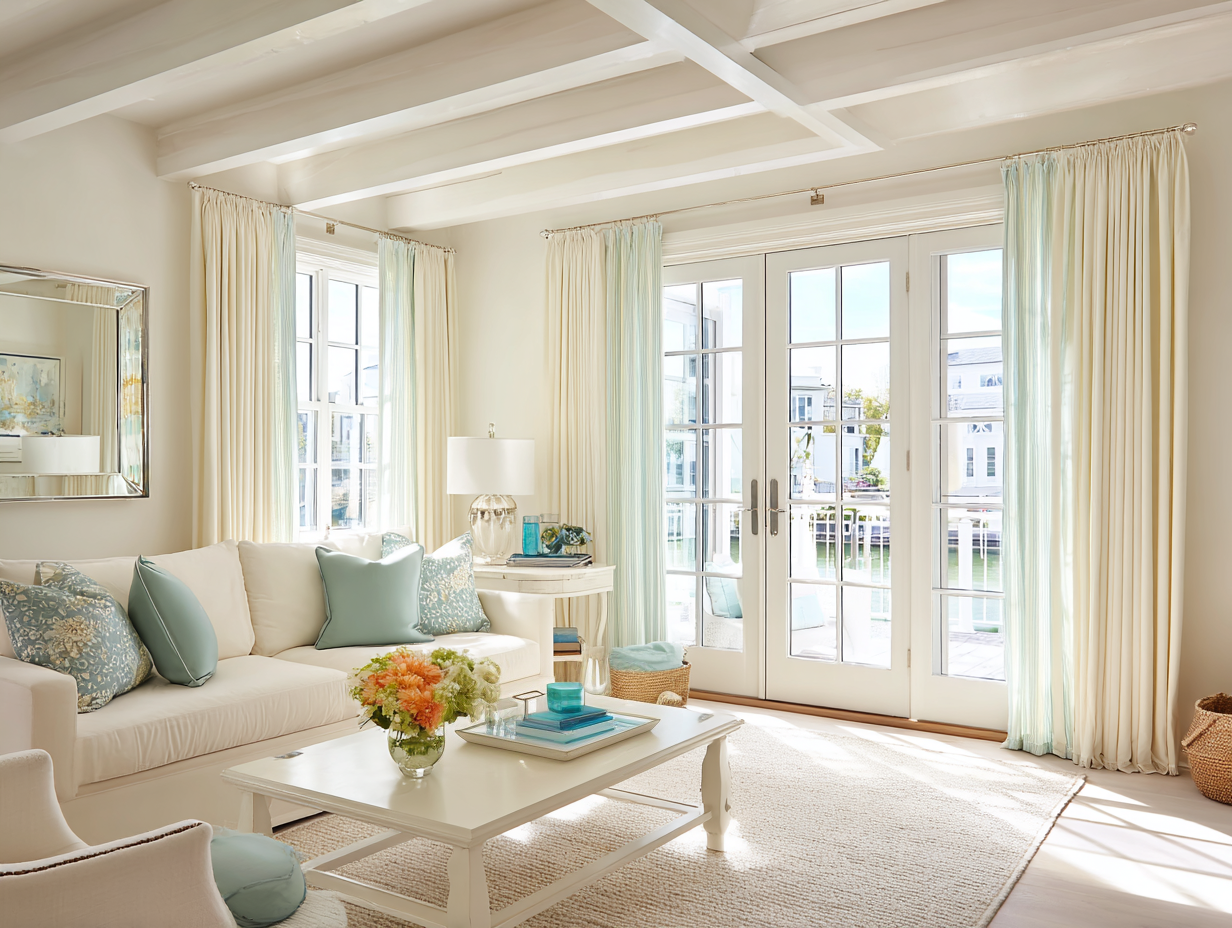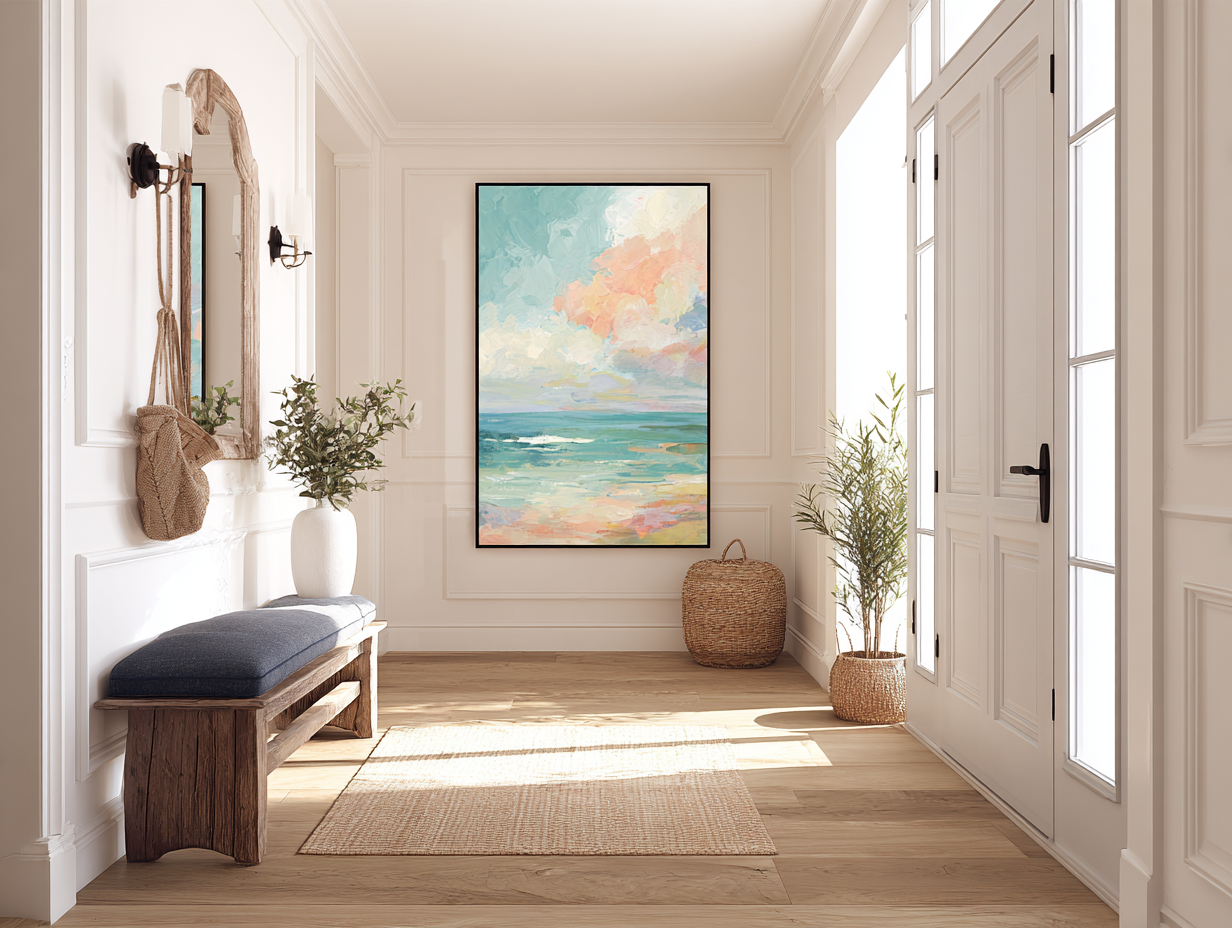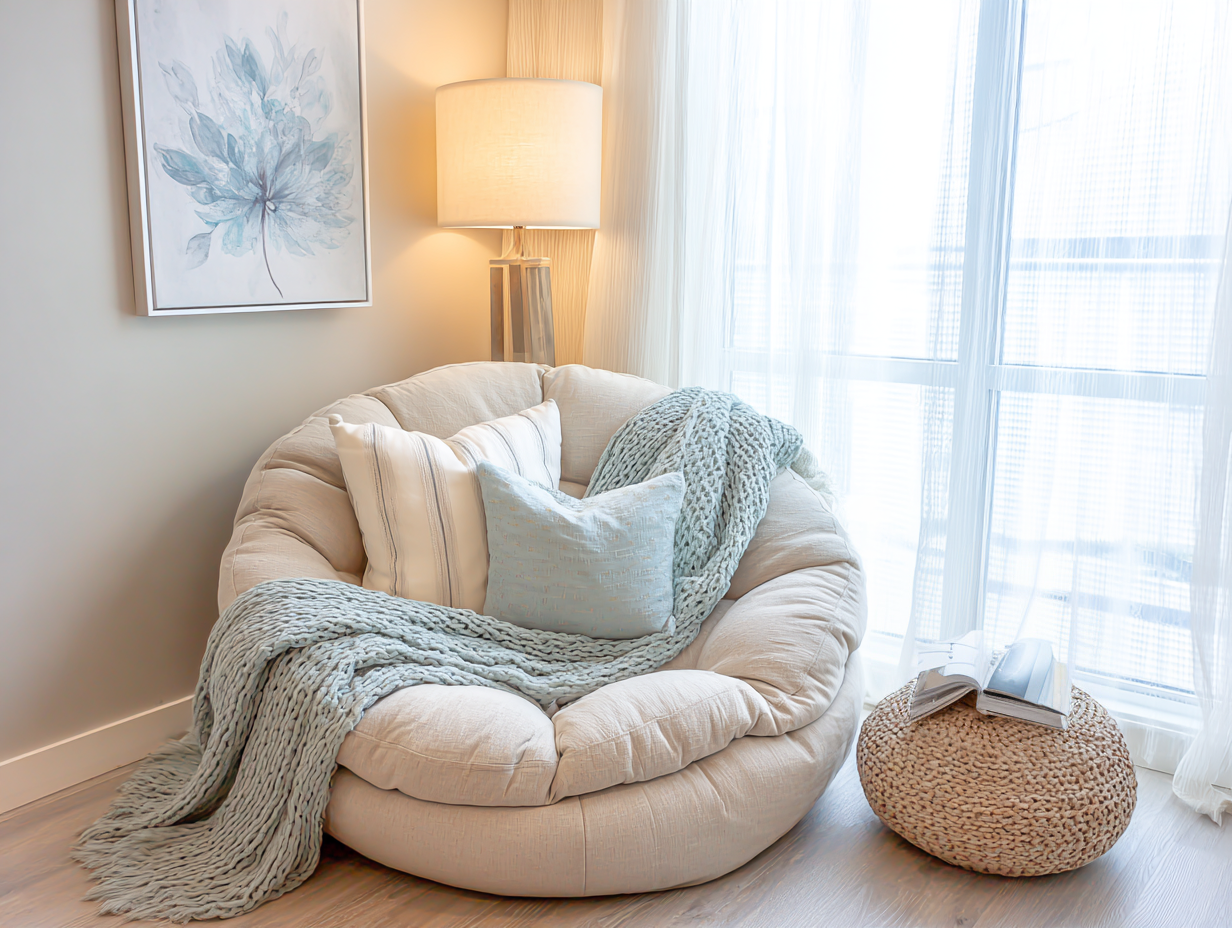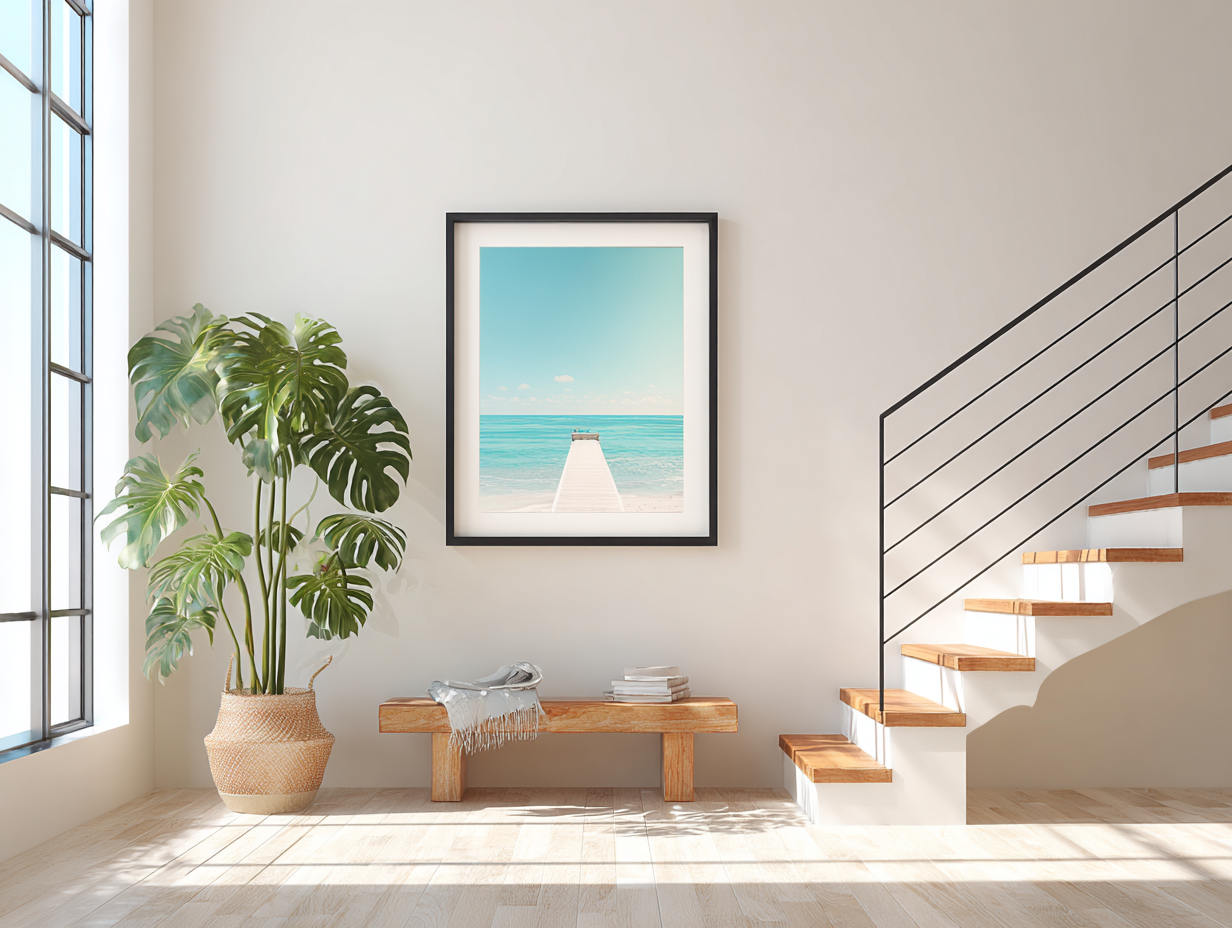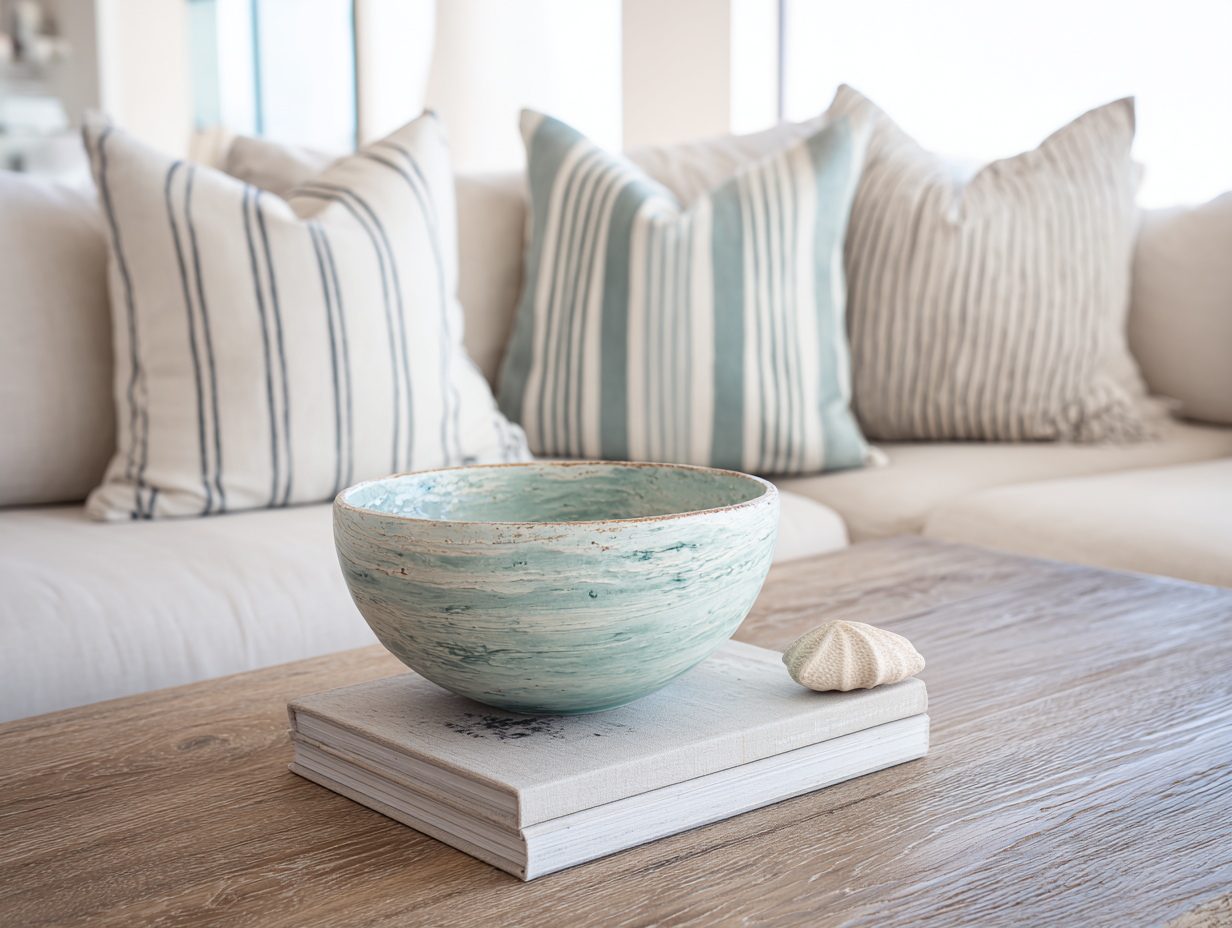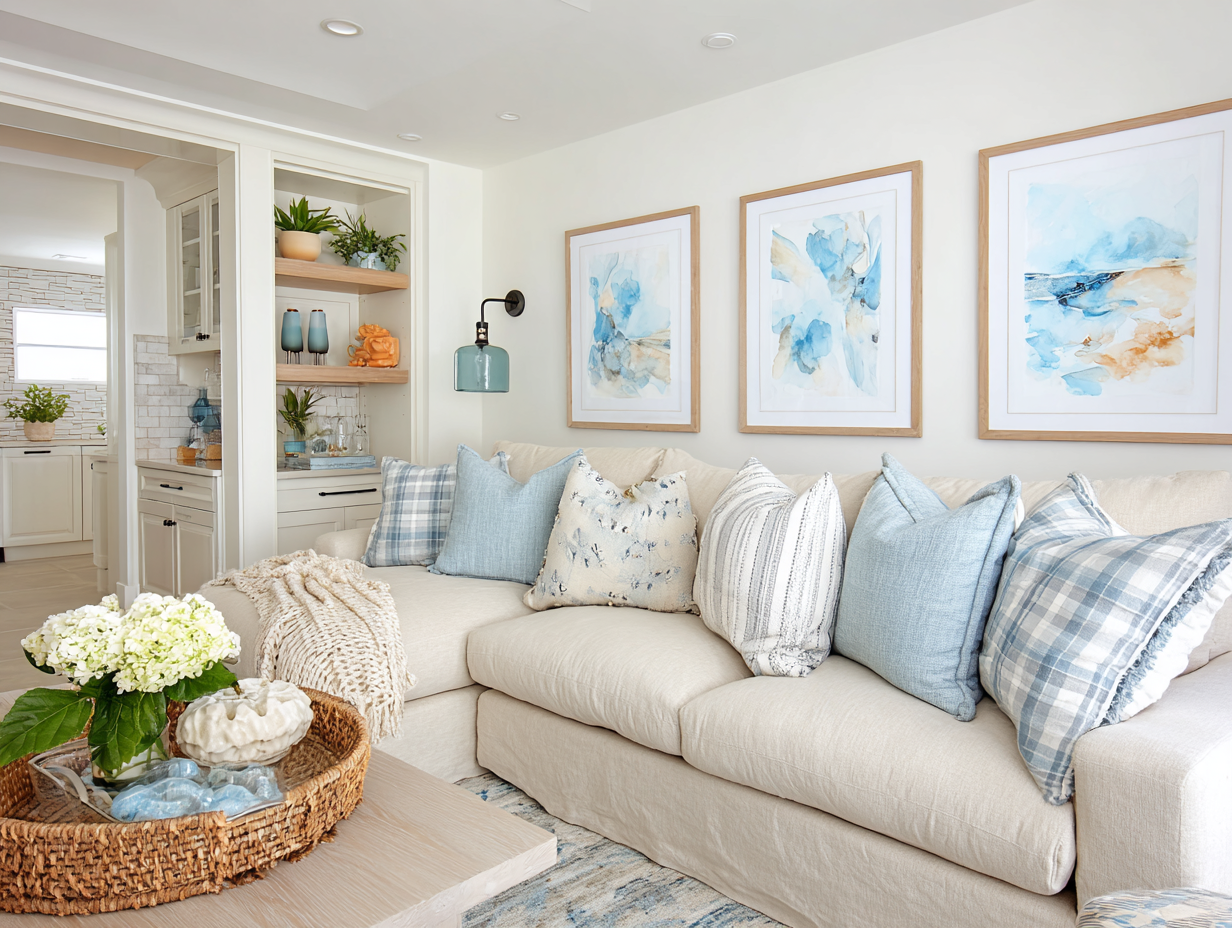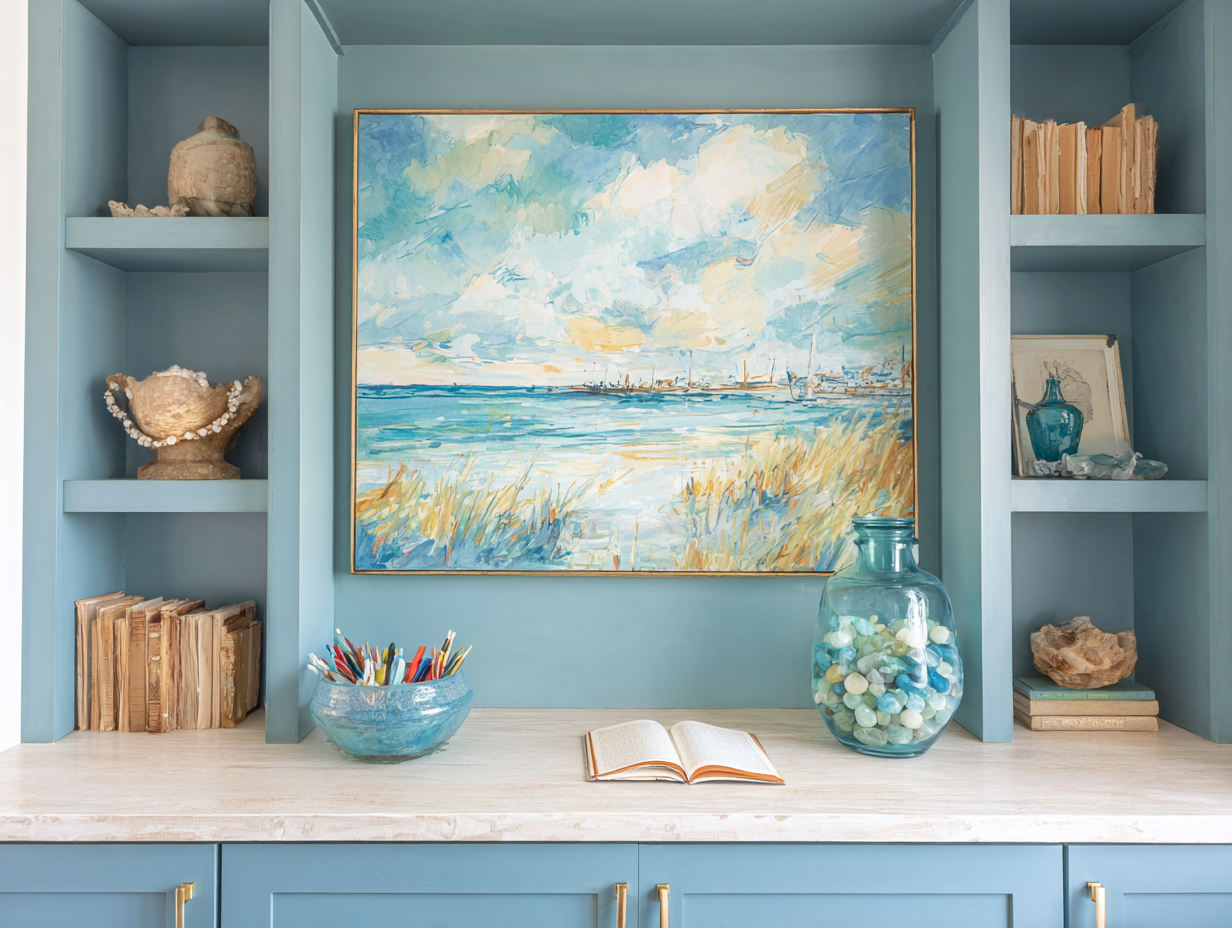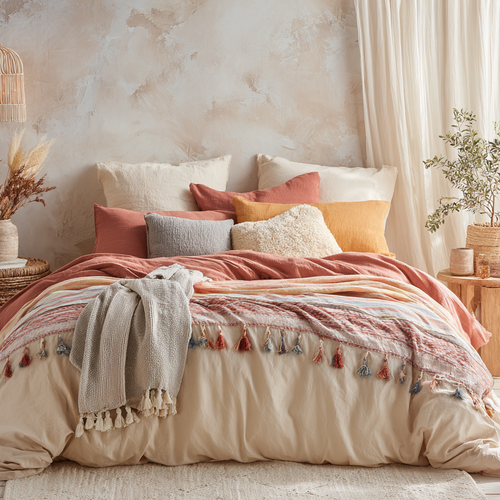Coastal decor has come a long way from the kitschy beach signs and seashell lamps of the past. Today’s modern coastal style is clean, elevated, and sophisticated—think ocean-inspired serenity without the souvenir shop vibes. Whether you live near the water or simply want to channel those relaxed coastal feels in your home, the modern coastal aesthetic is more about mood than motif.
From light-filled spaces and organic textures to subtle nautical nods and beachy neutrals, modern coastal design evokes the comfort of a high-end beach resort while maintaining timeless elegance. This style works beautifully in homes across the United States, whether you're in a North Carolina beach town, a California bungalow, or a high-rise apartment in Chicago. Unlike heavily themed or trend-based aesthetics, modern coastal interiors have enduring appeal, making them a smart design investment.
In this guide, we’ll show you how to design a modern coastal space that feels fresh, natural, and effortlessly stylish—no flip-flop wall art required.
1. Start with a Serene Color Palette
Modern coastal decor begins with a calming, nature-inspired color palette. Shades of white, ivory, soft sand, driftwood beige, pale gray, and muted sea-glass blues create a light, airy foundation. These colors are chosen for their ability to evoke the peaceful atmosphere of the coast: the soft hues of sand dunes, sun-bleached driftwood, ocean mist, and sky.
Avoid overly bright or saturated colors that can feel jarring. Instead, opt for tonal variation and layering within the same color family. For instance, pairing a soft white wall with a pale blue-gray sofa and warm beige area rug can instantly transform a space into a coastal retreat.
Pro Tip: Use warm whites and off-whites on walls to bounce natural light around the room. Look for paints with names like "Alabaster," "Swiss Coffee," or "White Sand" for the right effect. Layer in subtle blues and greens through pillows, vases, and artwork to create gentle contrast.
2. Incorporate Natural Textures
Texture plays a major role in coastal design, adding warmth and interest to an otherwise neutral space. In modern coastal homes, natural materials mimic the landscape outside. Woven baskets, seagrass rugs, linen curtains, rattan chairs, driftwood accessories, and jute poufs bring in visual and tactile richness.
Rather than relying on printed patterns or bold colors, the modern coastal look leans into contrast between smooth and rough, soft and structured. For example, a smooth quartz countertop might be paired with a textured rattan bar stool. A linen slipcover contrasts beautifully with a chunky wool throw.
Style Tip: Add a rattan pendant light or cane-backed dining chairs to introduce coastal texture without overwhelming the space. Mixing materials like bleached wood, wicker, and light stone gives your home a curated, layered feel.
3. Keep the Look Light and Uncluttered
One of the hallmarks of modern coastal decor is a sense of ease and openness. To create this effect, focus on furniture that feels visually light: pieces with open bases, slim profiles, and soft curves rather than heavy block shapes.
Decluttering is key. Don’t fill every surface or corner. Instead, curate your furnishings and accessories with care. Leave breathing room around your furniture to allow light to flow and give your home a spacious, relaxed feel.
Floating shelves, open bookcases, and minimalist coffee tables can help keep the room open while still providing space for display. Consider dual-purpose furniture like ottomans with storage or console tables with woven baskets underneath to keep things practical but tidy.
4. Let in the Light
Natural light is one of the best design elements in any coastal space. Large windows, light-filtering curtains, and bright interiors make a home feel fresh and connected to the outdoors. If your home doesn't get a ton of natural light, there are still ways to brighten your space.
Use sheer white or ivory curtains to soften the sun without blocking it. Avoid heavy, dark drapes that weigh down the room. Light-colored window treatments, reflective surfaces like mirrors or glossy tiles, and carefully placed lighting can all help amplify brightness.
Renovation Idea: If you're updating your home, consider installing French doors, transom windows, or skylights. These architectural features flood interiors with light and make your home feel larger.
5. Choose Coastal-Inspired Art Without the Clichés
Artwork in modern coastal homes should evoke the feeling of the beach without hitting you over the head with anchors and sailboats. Instead, look for pieces that are inspired by nature: abstract ocean paintings, shoreline photography, cloud studies, or coastal flora.
The goal is to evoke a sense of place without being literal. For example, a soft abstract painting in hues of blue and beige can remind you of a beach without actually depicting one. Alternatively, framed vintage maps, pressed seaweed, or hand-thrown pottery can bring in subtle nods to the coast.
Idea: Anchor your space with a large, moody seascape or a gallery wall of organic shapes and coastal botanicals. Stick to frames in natural woods, whitewashed finishes, or matte metals.
6. Bring in Touches of Blue (Subtly)
Blue is the most iconic color associated with coastal style, but in modern spaces, it's used with restraint. Rather than decking a room out in nautical navy, introduce multiple shades of blue as accents.
Think soft, watery hues: foggy blue-gray, denim, dusty teal, and pale aqua. These shades can be layered in textiles (throws, rugs, pillows), artwork, or accessories like glass vases and ceramics.
Design Tip: If you want to add contrast, a bold navy or indigo stripe can make a sophisticated statement when used sparingly—on a throw blanket or as part of a rug pattern. The key is balance and subtlety.
7. Add Greenery and Florals
A coastal home should feel connected to the natural world. One of the easiest ways to achieve this is with plants. Houseplants and floral arrangements bring life to interiors and prevent them from feeling too sterile or monochromatic.
Choose plants that echo the relaxed, sun-drenched atmosphere of coastal regions. Palms, snake plants, bird of paradise, monstera, and peace lilies are excellent choices. They thrive in bright light and bring that lush, vacation-ready feel.
Fresh eucalyptus, olive branches, or flowering stems like hydrangeas or wild grasses in simple vases can also add a breezy, organic touch without looking fussy.
8. Avoid Overly Literal Nautical Decor
It’s easy to fall into the trap of themed decorating when going coastal. But modern coastal style avoids anything too literal. Skip the rope knots, anchor prints, lighthouse figurines, or signs that say "Gone to the Beach."
Instead, bring in nautical elements with subtlety and sophistication. Woven textures, stripe patterns, weathered wood, and matte ceramics all hint at maritime influences without becoming kitsch.
Better Alternatives: Opt for artisan-made pieces, like a handcrafted ceramic bowl that resembles seafoam, or a sculptural coral-inspired lamp. These items have a sense of place without feeling forced.
9. Focus on Function and Comfort
The modern coastal home is not just for looks—it's meant to be lived in. Furnishings should be both comfortable and functional. Choose sofas with soft, sink-in cushions; performance fabrics that resist wear and spills; and pieces that invite relaxation.
Slipcovered furniture is a favorite in coastal homes for its casual look and easy care. Add a few throw pillows in linen or cotton and a light blanket for texture. Ottomans, poufs, and benches can provide extra seating or act as footrests and tables.
Tip: Keep furniture layouts open and inviting. Face seating areas toward natural light or the view, and avoid blocking windows or doors with bulky pieces.
10. Curate, Don’t Clutter
Modern coastal design is refined, not rustic. It celebrates simplicity and elegance. Instead of covering every shelf or surface, choose meaningful, well-designed pieces and give them room to shine.
Display items that tell a story: a ceramic bowl from a favorite vacation, a vintage coastal painting, or a collection of sea glass in a hand-blown jar. Use built-ins or display niches to contain your decor and keep surfaces tidy.
A curated home doesn’t mean sterile—it means intentional. Group decor in odd numbers, vary heights and textures, and leave negative space to let each element breathe.
Conclusion: A Style That Travels Well
Modern coastal decor is more than just a trend—it’s a lifestyle aesthetic that captures the essence of coastal living while maintaining timeless appeal. Its balance of airiness, natural textures, and soft sophistication makes it adaptable for homes across the country, whether or not there's a beach nearby.
What makes this style truly successful is its flexibility. You can lean into the serene minimalism of Scandinavian beach cottages, the polished charm of Hamptons interiors, or the earthy warmth of California coastal living—all while staying true to the modern coastal ethos.
By embracing these design principles, you can bring the calm and beauty of the coast into any room. Whether you're updating a single bedroom or decorating a whole house, modern coastal decor offers a relaxed and elegant foundation that will look just as beautiful in 10 years as it does today.

